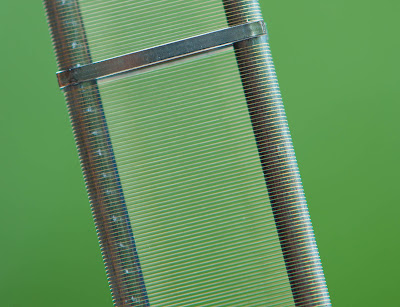In this post I will show the assembly of the Octal phono stage with the more elaborate power supply which was introduced in the previous post.
Most of the parts are mounted to the top plate. Here the plate with the sockets, power transformers and one of the chokes:
The sockets of the signal tubes are mounted with vibration damping rubber pieces:
Wiring of the heaters and rectifier tube:
Adding the heater choke and the terminal strips for all the passive parts:
Adding the passive components:
The finished phono stage from the back side during the first test run:
Completed with covers for the transformers and B+ choke:
Some comments about the sound from the first user of this phono preamplifier:
This preamp has absolutely no hum in my system. What is remarkable is also the absence of any other noise. It is just as quiet as the transistor phono stage which I was using before which got praise for it's low noise. The sound stage is first class which is important for me since a lack of sound stage would be immediately apparent through my electrostatic speakers. Everything is at the right place and the sound stage extends well outside of the speakers. The music is very powerful. This preamp sounds very relaxed and enjoyable both at high and low listening levels. I have found 'my' phono stage.
The phono stage in it's new home:
And for the german readers the comments of the owner in german:
Absolut kein Brumm!
Das Ding ist unglaublich rauscharm! Tatsächlich ist diese Phonopre bei "meiner" Lautstärke in den Pausen zwischen zwei Titeln genauso "mucksmäuschenstill" wie meine vorherige Phono (und dieser "transe" hat man u.a. DAS als ganz grossen Vorteil ggü. Röhre attestiert) Also auch in diesem Punkt: Hut ab!
Räumlichkeit ist allererste Sahne! Das war mir ja besonders wichtig, weil einem (bzw. mir) beim Hören über Elektrostaten soetwas sofort (negativ) auffällt. Ich denke dass deine Phono eine extrem gute Kanaltrennung haben muss. Jedenfalls ist bei "Harry Belafonte sings the Blues" alles an seinem Platz, bzw. dort, wo ich es in Erinnerung habe und die Musik geht unveränder rechts und links über die Elektrostaten hinaus.
Was mir ( jedenfalls am Anfang) aufgefallen ist: ggü. anderen Präs hatte ich das Gefühl, etwas mehr Abstand zur Bühne zu habe. Also jetzt Reihe 15 und vorher Reihe 3. Was explizit keine Kritik ist!
Meine Freundin meinte noch, dass die Musik jetzt irgendwie "kraftvoller" rüberkommt als vorher. Ich hab Sie gefragt, ob sie "wärmer" meinte, aber das hat sie eindeutig verneint.
Und dann (sehr laienhaft und für dich vielleicht komisch) noch etwas sehr Positives zum Schluss:
Hatte gestern abend wieder das gleiche Erlebnis wie meine erste Begegnung mit einem McIntosh: wenn ich Musik höre in "normaler" Laustärke (also kein Hintergrundgedudel) und dann trotzdem so entspannt hören kann, dass ich ab und zu (trotz relativ hoher Lautstärke) fast einschlafe! Entspannung! Das ist der Grund, warum ich Musik höre!
Thanks a lot to Steffen for the description and the photos.
Best regards
Thomas































































